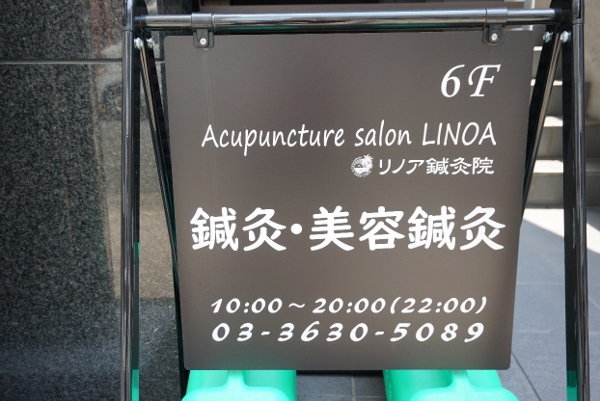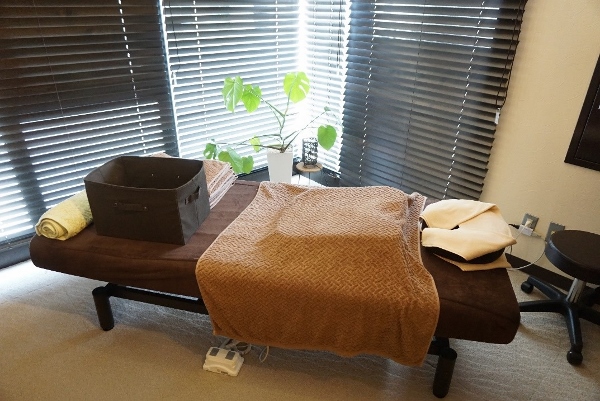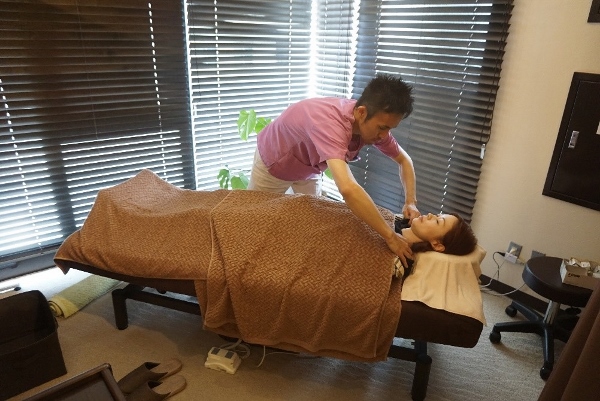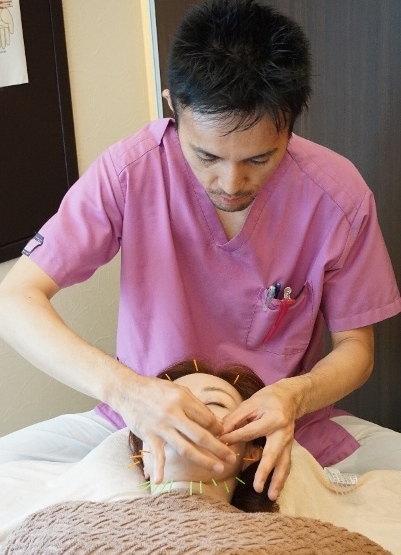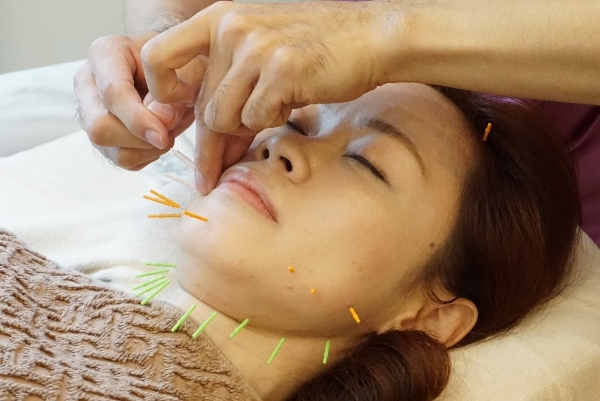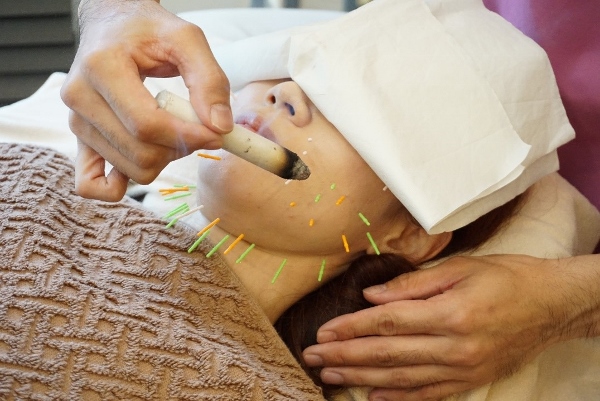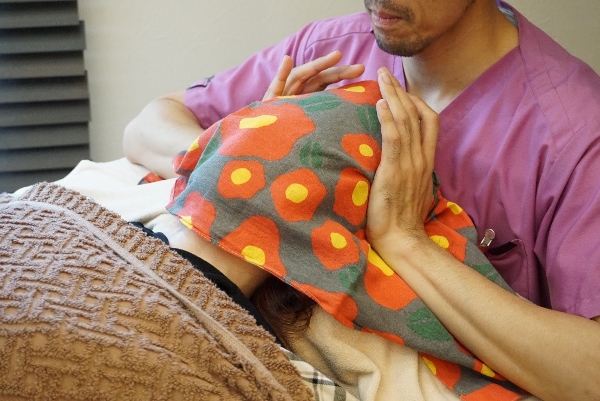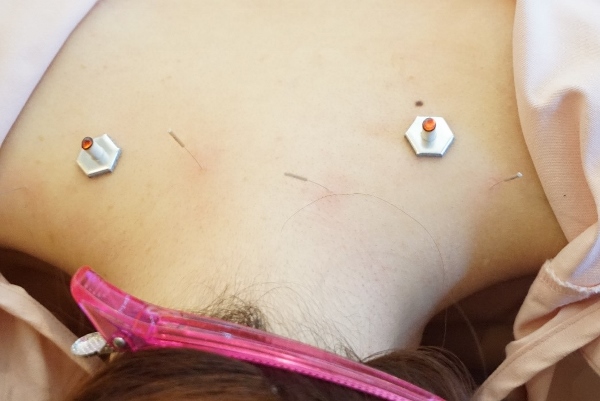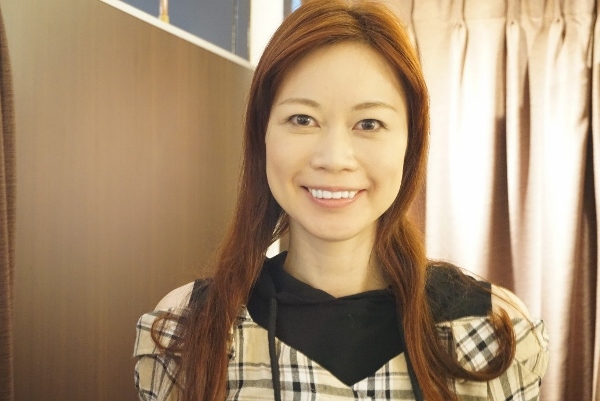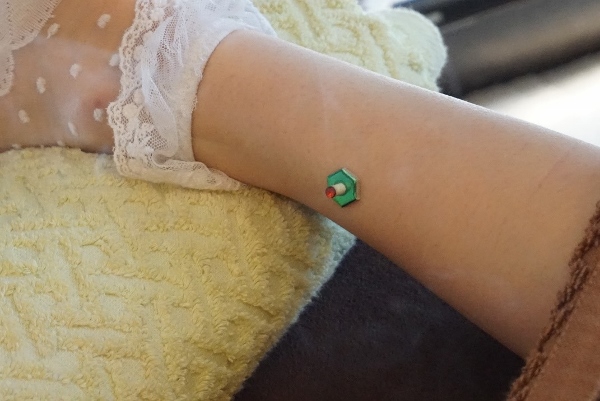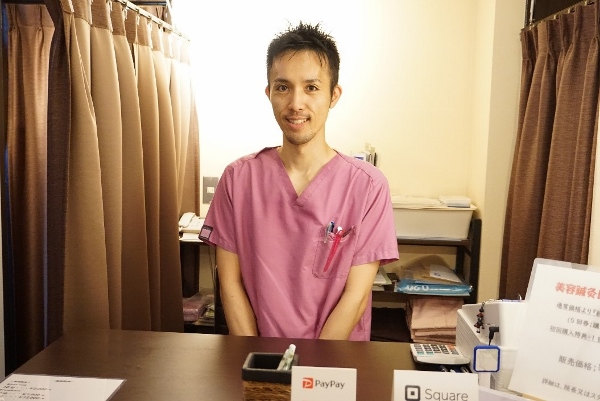Beauty Acupuncture with a Hawaiian Touch
Published: June 17, 2019
Are you looking for beauty treatment which is just that bit different? Well, Mr. Shigeki Nishimura may have the answer. Operating from Acupuncture salon LINOA, located on the 6th floor of a building in a side street off Kiyosumi-dori Avenue close to Monzen-nakacho Station, he offers facial beauty acupuncture treatment.
Mr. Nishimura opened the salon in September 2017, after obtaining a professional qualification in shinkyu (acupuncture and moxibustion), followed in 2011 by a period working at an acupuncture clinic. He created the name LINOA by marrying the Hawaiian word for shining with the word oasis. The Hawaiian theme reflects Mr. Nishimura’s love of the islands, which he has been a frequent visitor to.
The atmosphere on entering the salon is at once both calming and friendly, with its brown and cream décor, a strategically-placed large leafy plant, the aroma of o-kyu (moxa sticks), and in the background the sound of Hawaiian singers accompanied by the twanging of ukulele. Just the thing to put a person in the right frame of mind.
The majority of LINOA’s customers are female and are divided into those who come for the beauty treatment and those who come to have their aches and pains seen to.
According to Mr. Nishimura, facial beauty acupuncture aims to give the facial line an up-lift, remove worrying wrinkles and dark areas lurking under the eyes, and de-emphasise smile lines on either side of the nose.
I had come to watch Mr. Nishimura demonstrate his facial beauty acupuncture technique and wondered why he was using a “third person” until the demonstration began.
Mr. Nishimura introduced “Miyu-san” and began by cleansing her face of make-up, using alcohol, although he says it is best if customers remove any make-up before they come along to the salon.
Then taking extremely thin “hari” (needles), each about 1cm long, gently tapping and twisting, he inserted them into her neck.
Gradually working from there, he placed hari along her jaw, before moving to her chin, cheeks, and forehead.
By the time he had finished there were around 60 hari protruding from Miyu-san’s face, but she looked totally relaxed and at ease.
When I asked her if she felt any discomfort or pain, she replied, “Not at all”.
Leaving the hari in place, Mr. Nishimura proceeded to cover Miyu-san’s face with a paper towel and then, as part of the moxibustion process, lit a stubby moxa stick and wafted it across the towel and over the hari to gently heat them, as, once in place, warm hari are said to be more effective.
Finally, he used the palms of his hands to apply adjustment pressure to her skull.
Then he set to work on her shoulders. In contrast to the facial beauty acupuncture, for this part of the treatment he uses only four to six 3.9cm. hari, gently rotating them into the skin. This treatment is said to be good for stiff shoulders and headaches. He then lit two moxa sticks which he placed on her shoulders and left to heat up and take effect.
Once it was all over, I asked Miyu-san how she felt. According to her, her eyes felt clearer and her shoulder muscles lighter and looser.
In addition to facial beauty acupuncture Mr. Nishimura also treats patients for common ailments such as stiff shoulders (“40s” and “50s” shoulders), lack of sleep, poor blood circulation and swollen legs, as well as sports injuries; all employing acupuncture and moxibustion.
Prior to any treatment taking place, Mr. Nishimura conducts a consultation session with the patient, looking at life-style, matters affecting posture etc., before suggesting an order-made course of treatment.
Mr. Nishimura speaks basic English through his numerous trips to Hawaii and already has several non-Japanese clients. Sessions are by appointment, either by telephone or using the salon’s home page, which has a list of prices. According to Mr. Nishimura these compare reasonably with salons in central Tokyo.
So, if you are looking for something a bit different in the way of beauty treatment, why not give Acupuncture salon LINOA a try?
Story and photos by Jeremy Hutchinson



